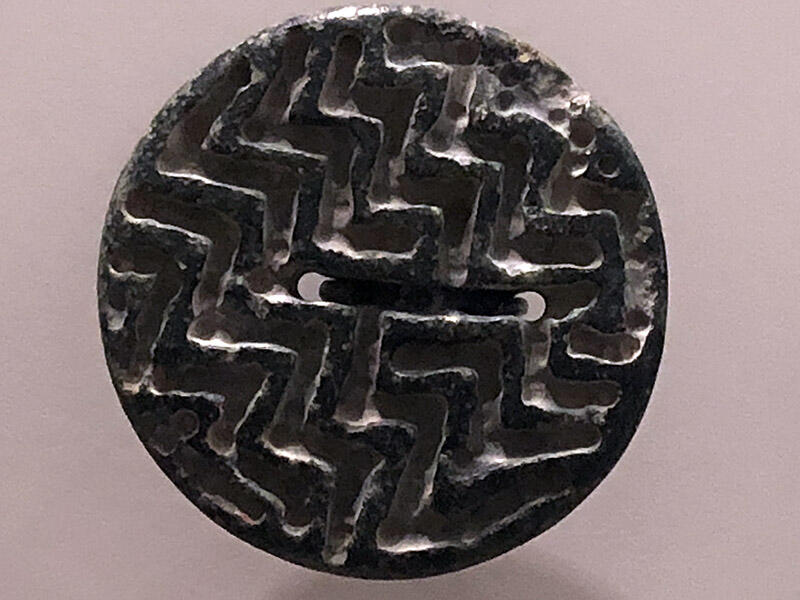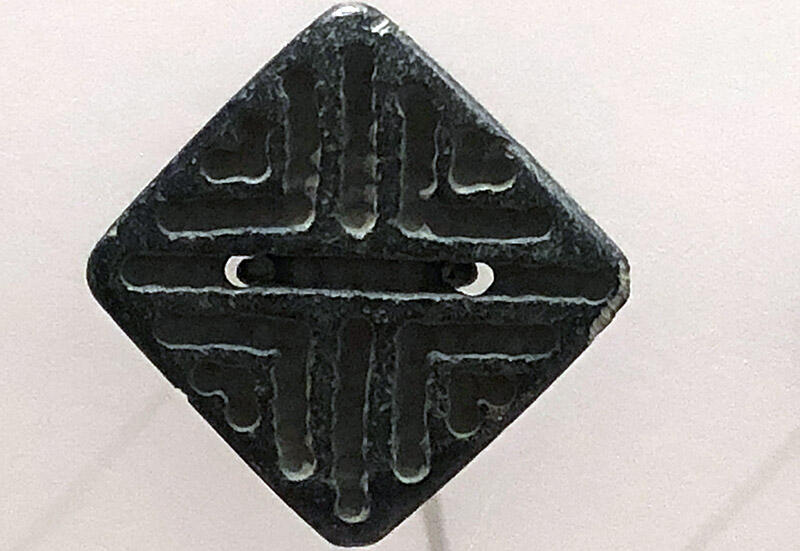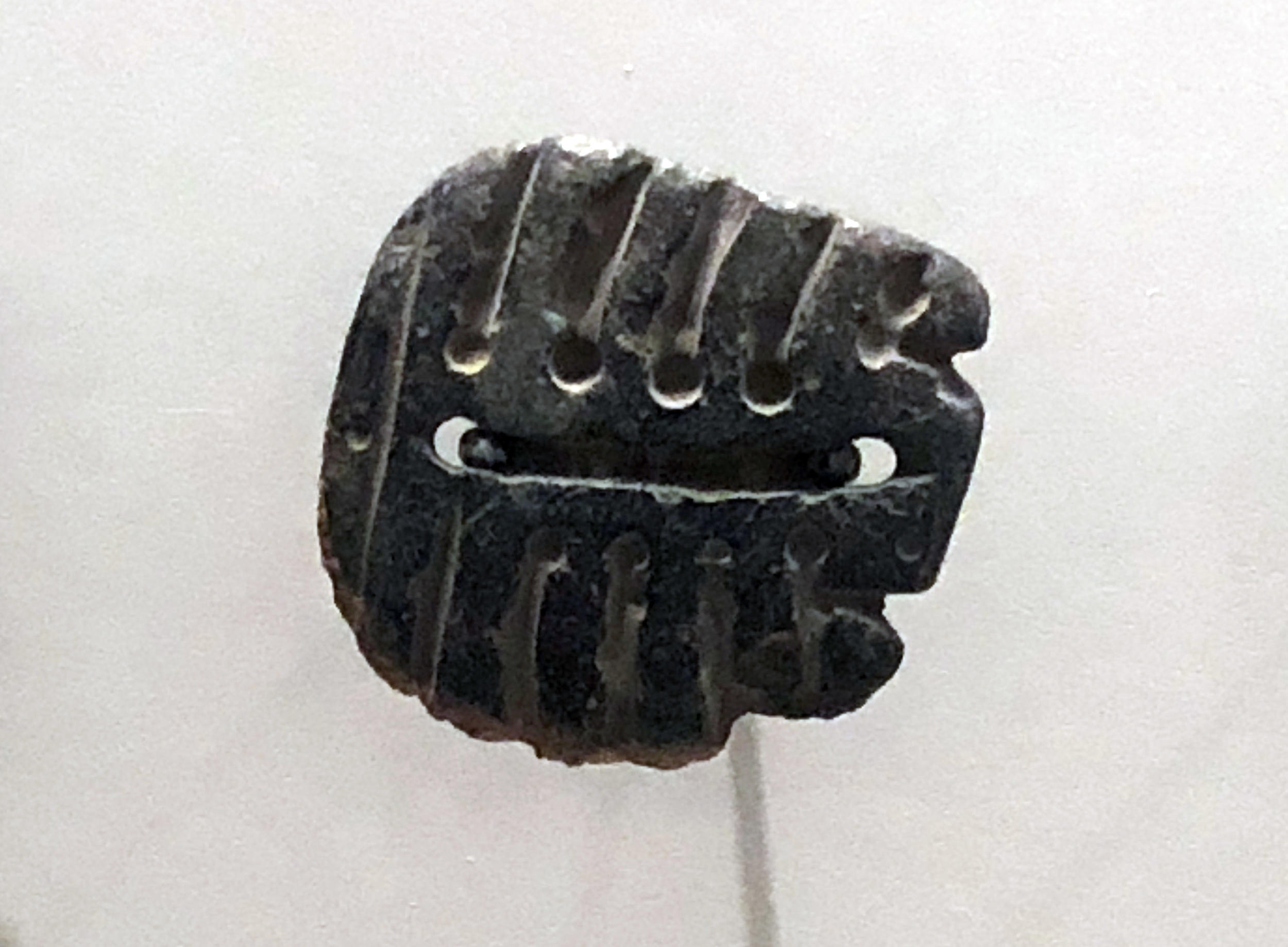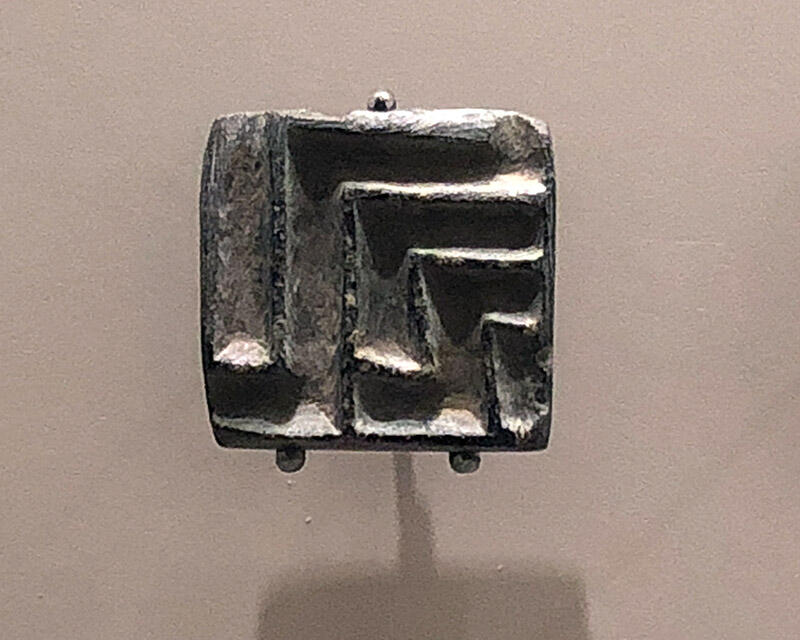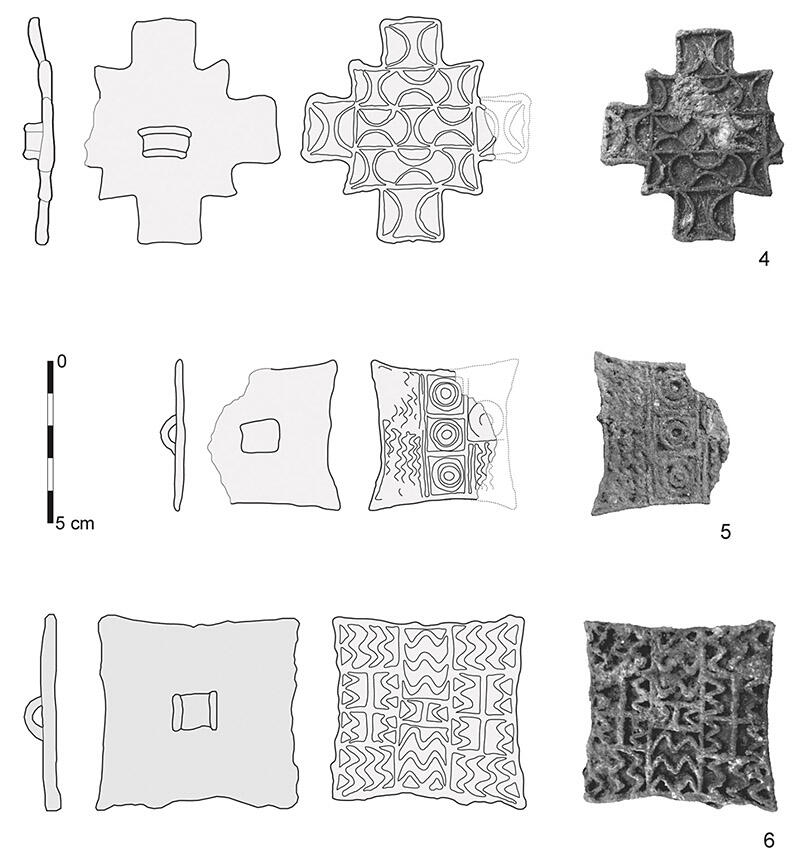The wide variety of seals found at Mundigak, mainly stone but also some copper, have deep material and stylistic connections with Central Asia (see two bronze Mundigak seals), and, towards the south-east, with sites recently found in Iran from between 4500 and 1900 BCE in the Jazmurian Valley, Iran. "In this period, the main ceramic comparisons concerning Eastern Jazmurian are with Shahr-i Sokhta III-IV and Mundigak IV.3 . . ." write authors Muhammad Heydari, Francois Desset and Massimo Vidale in the article Bronze Age Glyptics of Eastern Jazmurian, Iran. Similar motifs include "wavy lines" [Image 1, compare Image 5, above].
While similar design motifs do of course suggest interaction, the authors also say something about the specificity of Jazmurian seals that may hold for those from Mundigak as well; seals may have facilitated trade, but may also have had specific functions internal to a culture, town or city, perhaps more so in the earlier periods of seal manufacture: "Such apparent regional ‘seclusion’ of SEJ [Jazmurian] stamps contrasts with the general evidence of connectivity revealed by ceramics and the much-discussed trade in rare valuable commodities among various regions of Middle and South Asia in the Early Bronze Age. The picture of a local style and possibly local production—if confirmed by additional data—might suggest that these seals were involved in some form of elite economical or ceremonial activities, rather than in long-distance communication and exchange (but the fragmented, episodical nature of the record suggests that these hypotheses should be considered with caution)" (p. 150).
Images
1. A stone button seal from Mundigak Period IV (2750-2500 BCE).
2. A stone button seal from Period IV (2750-2500 BCE). Note the possible pipal leaf motifs near the edge halfway down each side.
3. Among the earliest stone disc seals found at Mundigak, this is dated to Period II, 3250-2750 BCE.
4. Stone seal from an unknown period.
5. Copper stamp seals from Spidej, Chegerdak and Keshik. Drawings and photos by F. Desset.
Note: the crescents in images 1-4 are reflections from the glass.

